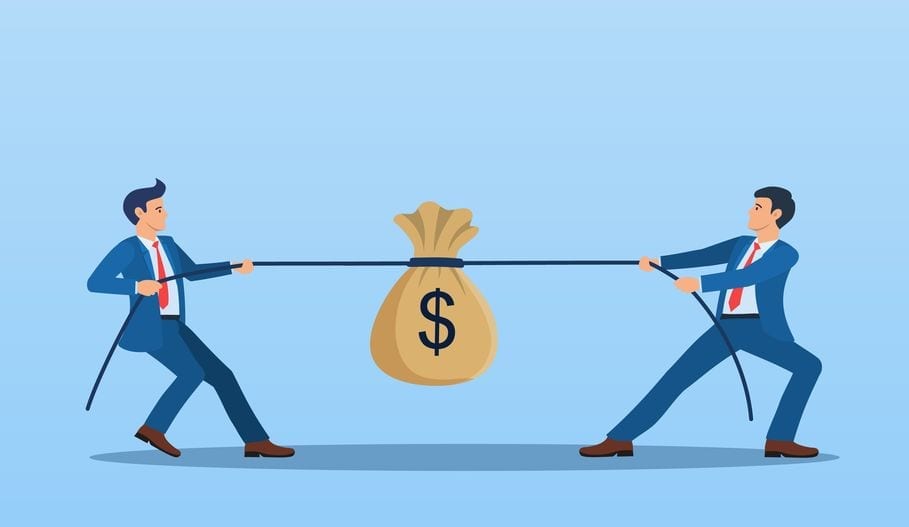How Can My Partner and I Value Our Company?
In a recent post, Breaking Up Is Hard To Do, we wrote about the problems that arise when owners of a small business don’t plan for the eventual change of ownership that always happens. In that article, we discussed the two owners of an 8-year old successful business. The owners were unable to agree on the value of the business when one of the owners wanted to buy out the other. We talked about the need for partner-owners to create a buy-sell agreement early in the life of the business that would stipulate how the owners would deal with these kinds of issues no matter what the cause. We suggested that one of the provisions of the buy-sell agreement would provide a formula for valuing the business, and we promised that a future piece would discuss various valuation methods.
The fair market value of a business is the price that is agreed upon between a willing buyer and a willing seller. The parties will usually begin by applying one or more valuation models, and then adjusting up or down for extenuating circumstances that may apply to the transaction. Some common valuation models that you might apply to your business are as follows:
- Book Value – This is the simplest way to value a business. It is done by subtracting the company’s liabilities from its assets. It is rarely used for the simple reason that it often results in the lowest possible value. For example, assets are usually carried on the books of a company at cost, net of depreciation. Book value makes more sense when the assets are adjusted to their current values, and thus we use the term, “adjusted book value” or “economic book value.” A more popular book value formula would be to only include assets that can be easily valued such as cash, accounts receivable, inventory, equipment, and real estate. This is often called “tangible book value” and is a terrific way to value a business that owns a lot of assets such as a factory or transportation equipment.
- Multiple of Sales or Profits – This is an excellent way to value a business that does not have a lot of assets or, as is often said, a large balance sheet. A software company or a service business might be an excellent example. Under this method, the formula that is agreed upon simply stipulates that the fair market value is a multiple of revenue, gross profit, or operating profit at the time of the transaction. Each industry has its own conventions and its own range of reasonable valuation multiples.
- Market Comp Approach – In this approach, private companies are compared to comparable public companies. For example, if a similar public company is valued at, say, 23 times current earnings, then that multiple can be applied to determine the value of the private company. When using multiples, private companies are usually adjusted downward because of the lack of liquidity in exchanging shares for cash. Non-financial comparisons might include companies with similar products, markets, or industry criteria. Financial comparisons might include size (revenues), EBITDA, cash flow, price to book, price to earnings, or M&A comps.
- Discounted Cash Flow Approach – Simply stated, this means that an analyst capitalizes anticipated future income streams or cash flows. This is accomplished by discounting a company’s future income or cash flow at an assumed opportunity cost of capital based on investment opportunities of comparable riskiness. This is called bringing future anticipated income to “present value.” This approach will generally, but not always, produce the highest value.
Mind you, there are many other methods for valuing a business, and many of those are much more complex than the ones outlined here. In fact, for clients who require a professional valuation, our firm offers business valuation consulting as one of our services. If you are a high tech start-up, you can find a tech company valuation estimator on our website. The good news is that regardless of the valuation method employed or how the value is determined, no one can claim, “You’re Wrong.” But do keep in mind that not everyone will necessarily agree with your assessment, and may question the underlying assumptions that led to your valuation.

